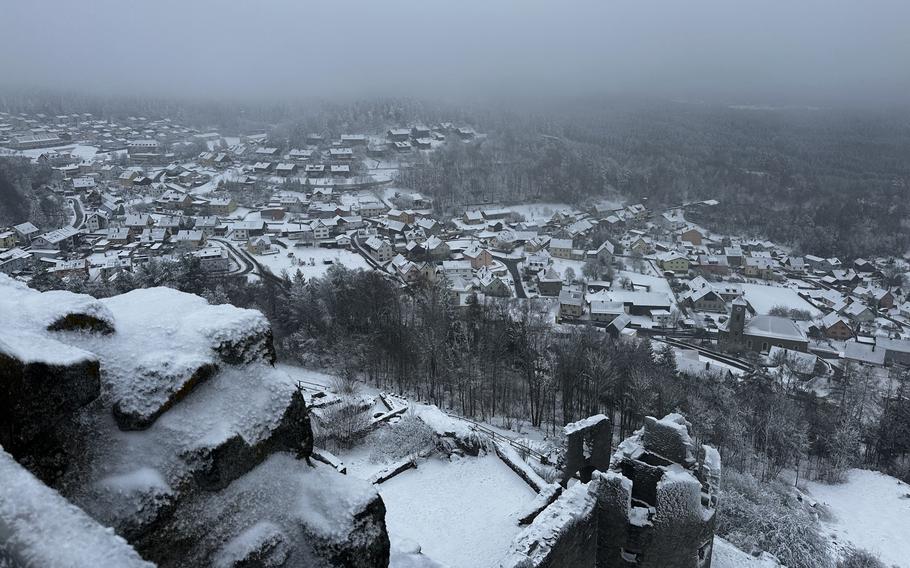Just a half-hour from two U.S. bases in Bavaria and a few minutes from the Czech border is the town of Flossenbuerg, which offers a history lesson spanning more than 1,000 years.
On arrival, Flossenbuerg looks like many other quaint Bavarian towns. However, it also provides two prominent snapshots into the area’s past.
The first is the remnants of the concentration camp the Nazis built here during World War II. The whole camp can be seen in around an hour, but the weather shortened my trip to 40 minutes.
Before Allied forces liberated it in 1945, forced labor, maltreatment and executions claimed the lives of more than 30,000 people. They are commemorated by the Cemetery of Honor and the Pyramid of Ashes.
The town’s large granite deposits were the initial draw for the Nazis, who established the concentration camp in 1938. It would go on to house more than 100,000 prisoners from all over Europe.
Visitors can walk around the site, although some areas may have limited access from December through February. Guided tours in German are offered on Sundays; English tours can be scheduled on request.

Visitors to the top of Flossenbuerg Castle, in Bavaria near the Czech border, can enjoy a view for miles on a clear day. (Michael Slavin/Stars and Stripes)
Rewinding centuries further into history, the ruins of Flossenbuerg Castle are where some of the best views in the area are found. While there is no definite construction date for the castle, most estimates put it between 1000 and 1100 AD.
Dogs are permitted, but it’s recommended to keep them on a leash because sheep roam the grounds from time to time. Although the 900-foot hike is not a long one, it requires an uphill climb. The hike to the top only takes about 15 minutes for the average walker.
Although it is a short drive back to base, visitors may want to pack a meal, as the selection of restaurants in the area is limited.
On the QT
Address: Concentration camp memorial, Gedaechtnisallee 5, Flossenbuerg, Germany; castle, Gaisthalweg 2, Flossenbuerg, Germany
Hours: Monday-Sunday 9 a.m.-4 p.m. for the memorial; all day year-round for the castle.
Cost: Free admission to both the castle and the concentration camp.
Information: Online: gedenkstaette-flossenbuerg.de/en